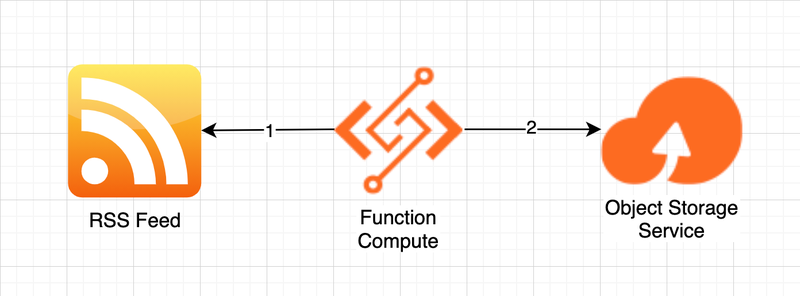When it comes to training advanced machine learning models, optimization is far more than just a technical nicety—it’s an absolute necessity. As someone who has spent years demystifying complex technological concepts, I find Bayesian optimization particularly fascinating because it represents one of those rare mathematical approaches that delivers both theoretical elegance and practical utility.
At its core, Bayesian optimization offers a systematic approach to finding optimal solutions for functions that are expensive to evaluate, without requiring knowledge of the function’s internal structure. This makes it invaluable for machine learning practitioners facing the daily challenge of tuning models efficiently.
The Evolution of Optimization in Machine Learning
Bayesian optimization has a rich history dating back to the 1960s, beginning with Harold Kushner’s pioneering work on locating maximum points in noisy environments. However, it wasn’t until Jonas Mockus formalized the approach in the 1970s and introduced the Expected Improvement (EI) principle that Bayesian optimization truly began to take shape as the methodology we recognize today.
The 1990s marked the transition from theory to application, with Donald R. Jones and colleagues integrating Gaussian Processes (GPs) with optimization strategies. This advancement significantly expanded practical implementations, though computational limitations still restricted widespread adoption.
Today’s computational resources have removed many of these barriers, making Bayesian optimization central to modern machine learning workflows, particularly in hyperparameter tuning for complex models.

How Bayesian Optimization Works in Practice
Unlike traditional optimization methods that might require gradient information or extensive sampling, Bayesian optimization employs a surrogate model (typically a Gaussian Process) to approximate the objective function. This surrogate model maintains uncertainty estimates that guide the search process through what’s known as an acquisition function.
The process follows a remarkably efficient loop:
- Build a probabilistic model of the objective function
- Find the point that maximizes the acquisition function
- Evaluate the true objective function at this point
- Update the probabilistic model with this new observation
- Repeat until convergence or budget exhaustion
What makes this approach particularly powerful is its ability to balance exploration (searching unexplored regions) and exploitation (focusing on promising areas) through carefully designed acquisition functions. Common acquisition strategies include:
- Expected Improvement (EI): Favors points likely to improve upon the current best solution
- Probability of Improvement (PI): Focuses on locations with high probability of exceeding the current optimum
- Upper Confidence Bound (UCB): Balances exploration and exploitation through a confidence parameter
Optimization – Practical Applications in Training Workflows
Hyperparameter Optimization
Perhaps the most common application of Bayesian optimization in machine learning is hyperparameter tuning. When training complex models like neural networks, decisions about learning rates, regularization strengths, and architectural choices dramatically impact performance. Manual tuning is prohibitively time-consuming, while grid or random search can waste resources on unpromising configurations.
Bayesian optimization excels here by intelligently navigating the hyperparameter space. For example, when training a deep learning model, each evaluation might require hours or days of computation. By modeling which combinations are likely to perform well, Bayesian approaches can often find optimal or near-optimal configurations with remarkably few evaluations—sometimes 5-10 times fewer than alternative methods.
Optimizing Training Resources – Optimization
Beyond hyperparameter selection, Bayesian methods help optimize computational resource allocation. Modern training often involves distributed computing across multiple machines with varying capabilities. Bayesian approaches can determine:
- Optimal batch sizes for different hardware configurations
- Distribution strategies for model parallelism
- Learning rate schedules that adapt to training dynamics
This resource-aware optimization becomes increasingly important as models grow in size and complexity, requiring careful orchestration of limited computational assets.
Neural Architecture Search – Optimization
Taking optimization a step further, Bayesian methods contribute to neural architecture search (NAS)—the process of automatically discovering optimal neural network architectures. While traditional NAS approaches are extremely computation-intensive, Bayesian optimization makes the process more efficient by:
- Focusing evaluations on promising architectural configurations
- Leveraging correlations between similar architectures
- Incorporating prior knowledge about successful designs
This application has led to the discovery of novel network architectures that outperform human-designed ones while requiring fewer computational resources to identify.

Optimization – Metagradient Descent: The Next Frontier
While Bayesian optimization provides a powerful framework for black-box optimization, recent advances in metagradient descent offer complementary approaches that deserve attention. Metagradient descent essentially optimizes the optimization process itself by treating hyperparameters as differentiable components.
This approach differs from Bayesian optimization in several key ways:
- It requires access to gradients, making it suitable for differentiable parameters
- It can adapt hyperparameters during training rather than between complete training runs
- It often scales better to high-dimensional parameter spaces
The combination of Bayesian optimization for global exploration and metagradient approaches for local refinement represents a particularly powerful toolset for modern machine learning practitioners.
Challenges and Practical Considerations
Despite its advantages, implementing Bayesian optimization comes with challenges:
Computational Complexity: The standard implementation using Gaussian Processes scales poorly with the number of observations (O(n³) complexity), making it challenging for large datasets.
Dimensionality Limits: Traditional Bayesian optimization typically works best in spaces with fewer than 20 dimensions, though recent advances have pushed this boundary.
Prior Specification: The choice of priors and kernel functions significantly impacts performance and requires domain expertise.
Integration Complexity: Incorporating Bayesian optimization into existing workflows often requires specialized libraries and expertise.
Practitioners can address these challenges through:
- Using scalable approximations like sparse Gaussian Processes
- Employing dimension reduction techniques before optimization
- Leveraging transfer learning from related optimization tasks
- Starting with simpler acquisition functions like Expected Improvement
Looking Forward
The future of optimization in machine learning training likely involves hybrid approaches that combine the global exploration strengths of Bayesian methods with the efficiency of gradient-based techniques. As models continue to grow in complexity and resource requirements, intelligent optimization becomes not just advantageous but essential.
For practitioners looking to implement these techniques, several mature libraries exist, including Scikit-Optimize, GPyOpt, and BoTorch. These tools provide accessible interfaces to sophisticated optimization techniques while handling many implementation details automatically.
The evolution of these optimization techniques represents one of the most important meta-advances in machine learning—improvements that make all other improvements more accessible. In a field where efficiency can mean the difference between a successful project and an abandoned one, mastering these optimization techniques provides a significant competitive advantage.



